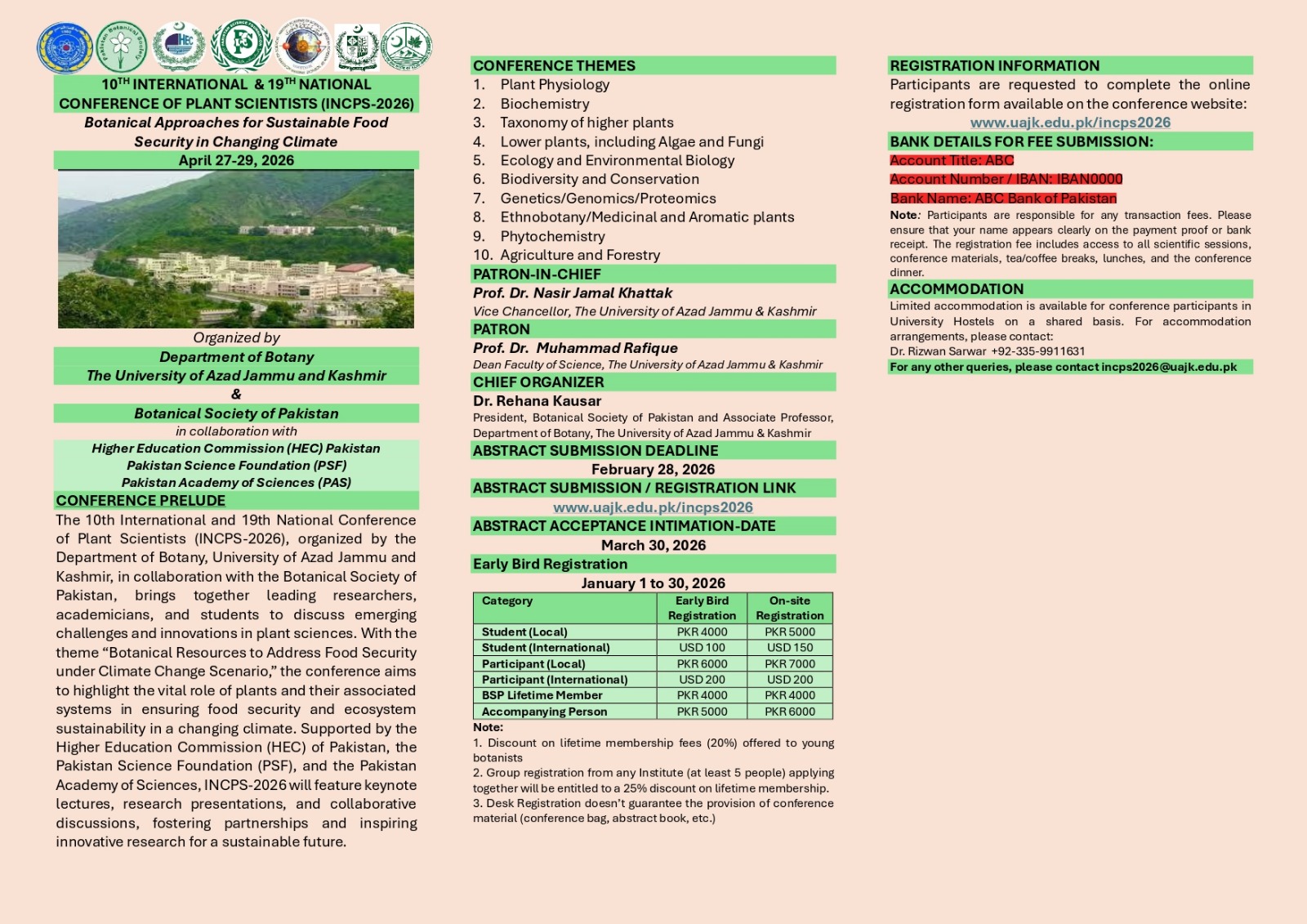
PJB-2018-1756
Antifungal potential of Trichoderma strains originated from north western regions of Pakistan against the plant pathogens
Muhammad Anees, Rashid Azim, Shafiq Ur Rehman, Muhammad Jamil, Salah E. El-Hendawy and Nasser A. Al-suhaiban
Abstract
Trichoderma spp. is an important genus of fungi because of its potential biocontrol and catalytic ability. Here, we isolated Trichoderma spp. from the North Western areas of Pakistan with the prime target to investigate their antagonistic potential. We tested them against different strains of phytopathogenic Fusarium oxysporum using different In vitro antagonistic assays. In total 22 strains out of 29 were evaluated against different F. oxysporum strains (FO. 866, FO. 899, FO. 1025) by dual culture, volatile inhibition, and culture filtrate inhibition tests. Moreover, the experimental set up also allowed us to suggest the probable mechanisms involved in the observed inhibition. Three strains (TMK22, TMK19, and TMK20) could completely inhibit the growth of F. oxysporum strains. The volatile metabolites and culture filtrates of the selected antagonistic Trichoderma strains were inhibitory. Twenty five percent concentration of the culture filtrates showed the maximum inhibition. More than 60% inhibition was achieved using 5% concentration of culture filtrates of Trichoderma. Trichoderma strains were identified based on morphology and sequence analysis of the internal transcribed spacer (ITS) region. All the strains belonged to only 3 species (T. longibrachiatum, T. brevicompectum and T. virens) although they were picked from spatially and climatically diverse areas. The present study, established the antagonistic abilities of the indigenous strains that can further be used to develop an efficient biocontrol system that may uphold in the prevalent environment.
To Cite this article:
Download PDF

